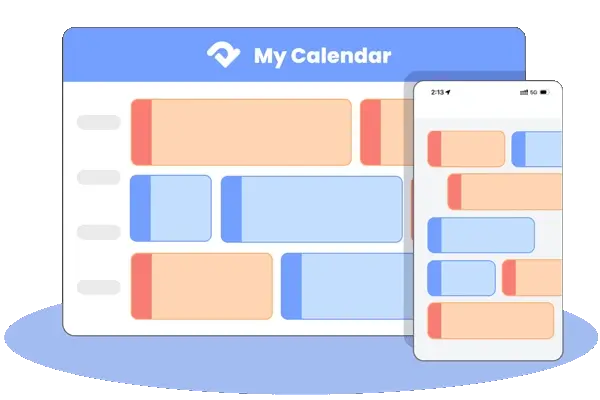Whether you run a small boutique hotel or a mid-sized property, a well-planned hotel budget is the backbone of your financial success. It’s more than just numbers on a spreadsheet; it’s a tool that turns goals into actionable plans, keeps operations on track, and helps you navigate unexpected challenges. In this guide, we’ll break down everything you need to know about creating and managing a hotel budget.
What Is a Hotel Budget?
A hotel budget is your property's financial plan for the year. It maps out the money you expect to earn – from rooms, dining, spa or event bookings, and other services – alongside every cost you'll face. This includes daily operating expenses, investments for the future, and funds set aside for the unexpected.
Think of it as your essential financial guide. It shows your expected income sources, directs where funds need to be allocated, and tracks your progress towards profit targets. Crucially, a well-built budget adjusts as circumstances change – whether guest demand shifts, market conditions evolve, or unforeseen events occur – helping you maintain financial stability.
Why Do Hotels Create Budgets?
Running a hotel without a budget is like driving somewhere new without GPS. You might eventually get there, but you'll waste fuel, time, and likely take wrong turns. A budget provides essential direction. Here’s why it matters:
- Makes Spending Choices Clear: A budget shows where your money should go. It helps you decide smart investments (like room upgrades) versus areas needing cuts (like high energy bills). This keeps spending focused on key goals, like filling more rooms.
- Keeps Everyone on the Same Page: When department managers know their spending limits and targets, the whole team works together financially. This naturally reduces overspending across housekeeping, marketing, and other areas.
- Creates a Safety Net: Unexpected problems happen – a broken
hair dryer, a slow booking month, or sudden price hikes from suppliers. A good budget includes backup funds for these surprises, stopping small issues from becoming big crises. - Shows What's Working (and What's Not): Comparing your actual income and costs against the budget acts like a report card. You quickly see successes (maybe a marketing campaign boosted sales) and problems (like unexpectedly high water bills). This lets you adjust your approach effectively.
When Is Hotel Budget Season?
Hotel budget season typically runs from October to December. This timeline lets you:
- Review the current year’s full performance data.
- Account for seasonal trends (e.g., busy summers or slow winters) using real numbers.
- Gather input from all departments.
- Share the budget with stakeholders (owners, investors) by early January, ensuring alignment for the new year.
Larger hotels may start as early as August for deeper analysis, but October to December works for most small to mid-sized properties. Starting early avoids rushing—accuracy matters more than speed.
How to Create a Budget for a Hotel
Creating a hotel budget is manageable with a step-by-step approach. Follow these steps to build a realistic, flexible plan:
1. Gather and Analyze Historical Data
Start with past performance—it’s your most reliable insight. Pull data from the last 1–3 years, focusing on:
- Revenue streams: Room revenue (occupancy rates, average daily rate/ADR), food & beverage sales, and other income (e.g., laundry, parking).
- Expenses: Fixed costs (rent, salaries) and variable costs (cleaning supplies, marketing, utilities).
- Trends: Seasonal peaks, events that drive bookings, or months with higher maintenance costs.
Property management systems (PMS) simplify this by automatically tracking bookings, rates, and costs, saving time and ensuring accuracy.
2. Set Clear, Realistic Goals
Your budget should reflect next year’s objectives. Examples include:
- Increasing occupancy by 5% in off-peak months.
- Reducing energy costs by 8% with LED lighting upgrades.
- Boosting direct bookings (to cut OTA fees) by 10% with targeted marketing.
Goals should be specific and measurable. Instead of “increase revenue,” aim for “raise room revenue by 7% by adjusting rates during local events”—this makes progress tracking easier.
3. Forecast Revenue
Use historical data and goals to predict next year’s income, breaking it down by month to account for seasonality:
- Rooms: Estimate occupancy and ADR for each month. If a local festival in July usually fills rooms, factor in higher rates.
- Food & beverage: If 60% of guests dine at your restaurant, use expected occupancy to forecast sales, including catering for events.
- Other services: Spa bookings, conference room rentals, or late-checkout fees—use past averages to predict these.
Be conservative with projections. Exceeding a modest goal is better than falling short of an overly optimistic one.
4. Estimate Expenses
List all costs, separating them into fixed and variable to avoid surprises:
- Fixed costs: These stay consistent regardless of occupancy, like staff salaries, insurance, or loan repayments.
- Variable costs: These depend on occupancy—e.g., more cleaning supplies or temporary staff during peak season.
Include one-time expenses, such as replacing furniture or upgrading software. If investing in new tools, account for upfront and ongoing fees.
5. Allocate Resources
Match revenue forecasts to expenses, prioritizing spending that hits goals:
- If boosting direct bookings is a goal, allocate more to marketing (e.g., social media ads).
- If energy costs are high, invest in efficient appliances to save long-term.
Set aside 5–10% of the budget for emergencies—this covers unexpected costs like a broken AC or last-minute repairs.
6. Monitor and Adjust
A budget isn’t static. Review it monthly to compare actual numbers to forecasts. Ask:
- Are we hitting room revenue targets? Should we adjust rates or run promotions?
- Are utilities higher than expected? Could staff training reduce waste?
- Is the contingency fund intact, or does it need replenishing?
Real-time tracking tools simplify this, letting you spot trends and adjust quickly.
Hotel Budget Sample Checklist
Use this checklist to ensure you don’t miss key elements:
Revenue Projections
- Room revenue (by month: occupancy, ADR, total)
- Food & beverage sales (dining, room service, catering)
- Other income (spa, events, late fees, parking)
Expenses
- Fixed costs: Salaries, rent/mortgage, insurance, loan payments
- Variable costs: Cleaning supplies, utilities, marketing, OTA commissions
- One-time costs: Renovations, new equipment, software upgrades
Strategic Investments
- Technology (booking tools, management software)
- Staff training (customer service, new processes)
- Guest experience upgrades (amenities, Wi-Fi)
Contingency
- Emergency fund (5–10% of total budget)
- Plan for low-occupancy months

Final Thoughts
A hotel budget is how you stay in control of your money. Want to keep your hotel making money, even when things change? Start with past numbers—they show what’s worked before. Then set simple, clear goals. And don’t just make a budget and forget it—check in on it regularly.
What matters most is being able to shift when you need to. If a month goes better (or worse) than you thought, tweak the budget. Maybe you need to raise room rates a little or cut back on a small expense. Do this every month, and over time, your hotel will get stronger. You’ll avoid big financial surprises, and you’ll have a better sense of what keeps guests coming—and what keeps your profits steady. That’s how you build a hotel that lasts.

